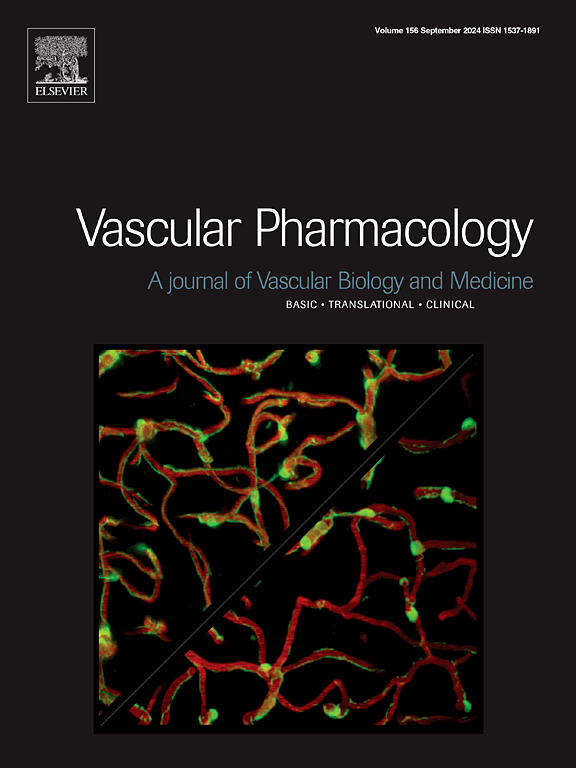COVID-19患者抗磷脂抗体患病率:一项荟萃分析
IF 3.5
3区 医学
Q2 PHARMACOLOGY & PHARMACY
引用次数: 0
摘要
目的:在一些报道中,抗磷脂抗体(aPL)在COVID-19患者中的患病率较高。本研究旨在通过荟萃分析比较COVID-19患者和健康对照之间的aPL患病率,以及aPL类型的差异。方法:检索Embase、Web of Science、PubMed和The Cochrane Library数据库中关于COVID-19与aPL相关性的已发表文献。观察组为新冠肺炎患者,对照组为健康个体。结果测量包含以下任何一种aPL:经典aPL:抗心磷脂抗体(aCL)和抗β2-糖蛋白-1抗体(anti -β2GP1);其他非标准aPL:抗磷脂酰丝氨酸/凝血酶原抗体(aPS/PT)和抗膜联蛋白- v抗体(AnV)。meta分析在Review Manager 5.4上进行。结果:10项研究纳入2288例患者。meta分析结果显示,COVID-19组的Classic aPL和Any aPL患病率显著高于健康组(Classic aPL, RR = 2.55,95 % CI = 1.83-3.55,P )。结论:COVID-19患者的aPL患病率显著高于健康对照组。IgM aPL在COVID-19感染早期更容易检测到,而IgG aPL可能在SARS-CoV-2感染后免疫流行病学的后期时间点更受关注。本文章由计算机程序翻译,如有差异,请以英文原文为准。

Prevalence of antiphospholipid antibodies in COVID-19 patients: A meta-analysis
Objective
In some reports, antiphospholipid antibodies (aPL) prevalence is higher in COVID-19 patients. This study intended to compare aPL prevalence between COVID-19 patients and healthy controls, and differences in aPL types using meta-analysis.
Methods
This work retrieved published literature about association between COVID-19 and aPL from Embase, Web of Science, PubMed, and The Cochrane Library databases. The observation group was COVID-19 patients, and the control group was healthy individuals. Outcome measures contained any of following aPLs: classic aPL: anti-cardiolipin antibodies (aCL) and anti-β2-glycoprotein-1 antibodies (Anti-β2GP1); other non-criteria aPL: anti-phosphatidylserine/prothrombin antibodies (aPS/PT) and anti-annexin-V antibodies (AnV). Meta-analysis was done on Review Manager 5.4.
Results
10 studies involving 2288 patients were deemed eligible for inclusion. The results of the meta-analysis showed that the prevalence of Classic aPL and Any aPL in the COVID-19 group was significantly higher than in the healthy group (Classic aPL, RR = 2.55, 95 % CI = 1.83–3.55, P < 0.00001; Any aPL, RR = 2.34, 95 % CI = 1.46–3.77, P = 0.0005). Anti-β2GP1 IgA antibodies were the most common aPL in COVID-19 patients, with a significantly higher prevalence than in the healthy group (RR = 4.26, 95 % CI = 2.84–6.40, P < 0.00001). The prevalence of the four types of IgM aPL was significantly higher in the COVID-19 group compared to the healthy group, while there was no significant difference in aPL IgG between the two groups.
Conclusion
The prevalence of aPL in COVID-19 patients was significantly higher than in the healthy control group. IgM aPL was more easily detectable in the early stages of COVID-19 infection, while IgG aPL may be of more concern in the later time points of the immune epidemiology following SARS-CoV-2 infection.
求助全文
通过发布文献求助,成功后即可免费获取论文全文。
去求助
来源期刊

Vascular pharmacology
医学-药学
CiteScore
6.60
自引率
2.50%
发文量
153
审稿时长
31 days
期刊介绍:
Vascular Pharmacology publishes papers, which contains results of all aspects of biology and pharmacology of the vascular system.
Papers are encouraged in basic, translational and clinical aspects of Vascular Biology and Pharmacology, utilizing approaches ranging from molecular biology to integrative physiology. All papers are in English.
The Journal publishes review articles which include vascular aspects of thrombosis, inflammation, cell signalling, atherosclerosis, and lipid metabolism.
 求助内容:
求助内容: 应助结果提醒方式:
应助结果提醒方式:


